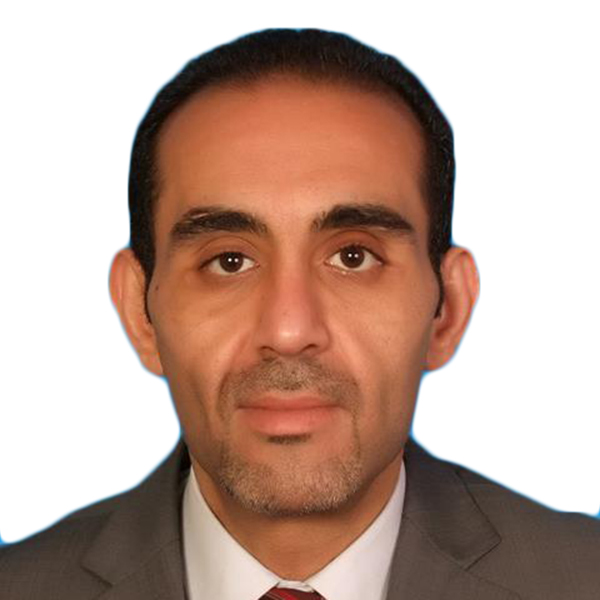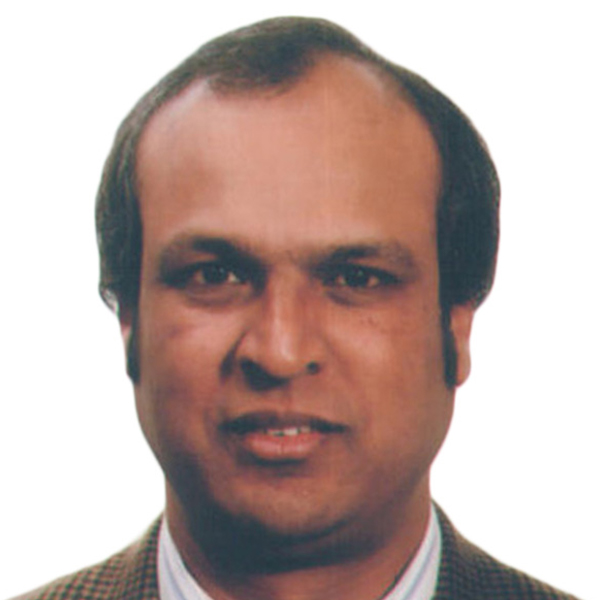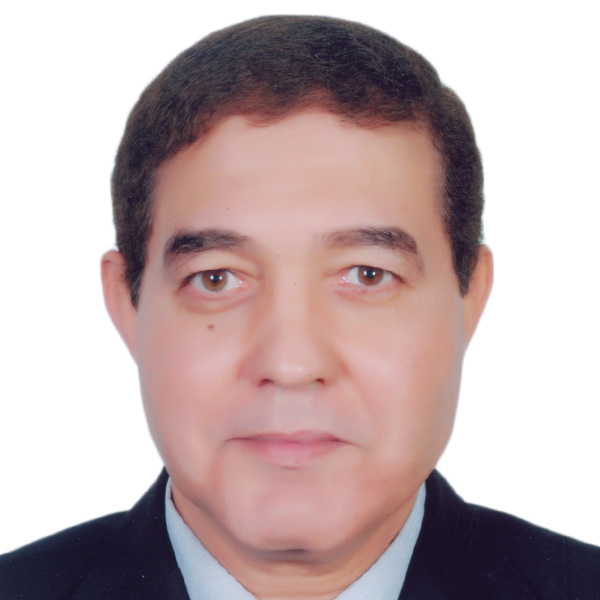Visa Options for Doctors in the USA
Around 262,000 foreign-born physicians and surgeons work in the USA, accounting for about 26.5% of the approximately 987,000 physicians and surgeons practicing medicine in the United States.
About 15% of the foreign-born physicians and surgeons who work in the US come from Europe, Canada or Oceania; while 14% are from Asia; 8% are from South America; 6% are from Africa; 3% are from The Caribbean; and 2% are from Mexico and Central America.
This article will discuss the various US visas for doctors along with the basic requirements, so keep reading to learn the essential information!
Table of Contents
US Doctor Requirements
There are several requirements that international medical graduates (IMGs) must satisfy before they can legally practice medicine in the United States.
An international medical graduate (IMG) is someone who earned his or her medical degree (such as an MD) at a medical school that is outside of the USA or Canada.
The requirements for a foreign-born IMG to practice medicine in the USA generally include the following:
- The IMG’s medical school from which he or she graduated needs to satisfy the criteria of the Educational Commission for Foreign-Trained Medical Graduates (ECFMG). The World Directory of Medical Schools will list a note stating if a particular medical school meets the ECFMG criteria and the IMG’s year of graduation from ECFMG-eligible medical school must also be listed there.
- The IMG must file an Application for ECFMG Certification, a process which evaluates whether he or she is prepared to start a residency or fellowship program in the United States, and it generally involves:
- Obtaining a ECFMG or USMLE Identification Number (needed to file the Application for ECFMG Certification)
- Filing the Application for ECFMG Certification
- Sending a copy of the medical diploma to ECFMG
- Any required document not written in English must have an English translation that meets ECFMG criteria (required credentials include the medical diploma, medical school transcripts and transcripts used to confirm transferred credits)
- Satisfying the Medical Science Exam Requirement by passing Steps 1 and 2 (Clinical Knowledge) of the United States Medical Licensing Examination (USMLE). A foreign doctor will need to obtain the relevant US visa to enter the United States to take the USMLE Step 2 Clinical Skills exam, which is offered in five cities in the US a few times per year; however, the exams are also offered at test centers in several regions outside of the USA.
- Satisfying the Clinical Skills Requirement and Communication Skills Requirement by completing the ECFMG Pathway
- Once the IMG has received ECFMG Certification, he or she will generally need apply for and be accepted to a paid medical residency program in the United States or Canada and apply for and receive the relevant US visa that allows clinical training to conduct medical services (such as the J-1 Visa or H-1B Visa) or the relevant Canadian visa (if applying for a medical residency program in Canada). According to the American Medical Association (AMA), foreign physicians must complete a medical residency program in the US or Canada regardless of the overseas training that he or she received. Medical residency in the United States usually takes at least three years to complete and is a paid position.
- Step 3 of the United States Medical Licensing Examination (USMLE) must generally be completed before applying for a state license to practice medicine.
- All graduates of medical schools are required to apply for and receive a license in the state where they plan to practice medicine in the USA. Every US state requires an IMG to have completed a minimum of one year of medical residency accredited in the United States or Canada prior to applying for a state license; 12 states mandate at least two years; and 25 states require three years of approved medical residency. Each US state has its own requirements for a state license, so it is a good idea for IMGs to review the licensure criteria for various states where they may like to live and work in the USA before starting the licensure procedure.
In sum, in order for an international medical graduate (IMG) to practice medicine in the USA, he or she generally must:
- Get certified by the Educational Commission for Foreign-Trained Medical Graduates (ECFMG);
- Complete Steps 1, 2 and 3 of the United States Medical Licensing Examination (USMLE);
- Complete an accredited paid medical residency program in the USA or Canada (1-3 years);
- Become licensed in the state where he or she wants to practice medicine in the USA.
Please note that this is an overview of the US doctor requirements for international medical graduates (IMGs), it should not be considered as US immigration or legal advice, and the requirements and procedures are subject to change at any time.
Visa Options for Doctors
There are several US visa options for doctors from overseas who want to live and work in the USA.
Keep in mind that foreign-born doctors are paid during their medical residency at a hospital or other employer in the United States and in some cases may do their residency with one US visa and then work as a licensed doctor (after completing their paid residency) using a different US visa.
There is, however, an option to complete the medical residency in the United States and afterward work in the USA as a licensed doctor using one US visa, such as the H-1B Work Visa.
The most common non-immigrant work visas for doctors in the US are the J-1 Visa, H-1B Visa, O-1 Visa and TN-Visa.
Foreign-born doctors may also have the opportunity to apply for a permanent resident immigrant visa and Green Card through employment-based (EB) US visa programs (such as the EB-1 Visa or EB-2 Visa) or family sponsorship by an American citizen or US permanent resident or the Diversity Visa Lottery Program.
Non-Immigrant Visas for Doctors in US Include:
J-1 Visa for Doctors:
- The majority of US medical residency programs offer the J-1 Exchange Visitor Visa for Graduate Medical Education.
- The Educational Commission for Foreign-Trained Medical Graduates (ECFMG) sponsors IMGs for the J-1 Visa for clinical training (i.e., medical residency or fellowship) programs in the USA.
- The J-1 Exchange Visitor Visa for international medical graduate (IMGs) in clinical training programs in the USA is generally valid for the “duration of status” (i.e., the time required to complete the clinical training program), although the length of stay could be updated in the future.
- To apply for the J-1 Visa for Doctors in US Clinical Training Programs, the IMG must generally:
- Receive ECFMG Certification (this includes completing USMLE Steps 1 and 2 successfully)
- Have a contract or offer letter for a Graduate Medical Education clinical training program in the US
- Possess a Statement of Need from the Ministry of Health of his or her last country of permanent residence
- The foreign doctor will need to return to his or her home country for two years after completing the clinical training program in the USA under the J-1 Exchange Visitor Visa Program, in order to share the knowledge that was acquired, before applying for an H-1B Work Visa, L-1 Work Visa or other US work visa, or for a US Permanent Resident Visa (such as the EB-1 Visa or EB-2 Visa), UNLESS a J-1 Visa waiver is received.
H-1B Visa for Doctors:
- The H-1B Work Visa is a non-immigrant visa for doctors in US clinical training programs and for foreign doctors and other individuals in specialty occupations who want to work in the USA on a temporary basis.
- The H-1B Work Visa is initially issued for up to three years, can be renewed for up to an additional three years (six years total) and there is an option to apply for a Permanent Resident Green Card if the person qualifies for one of the US immigration programs, such as the employment-based (EB) Green Cards (e.g., EB-1 or EB-2), family sponsorship by an American citizen or US permanent resident (for example, via marriage), or through the Diversity Visa Lottery Program.
- It is possible for an international medical graduate (IMG) to use their H-1B Work Visa for their paid residency or fellowship in the United States and then use the H-1B Work Visa to transition into medical practice (for example, by being sponsored for the H-1B Work Visa renewal by a university or non-profit organization in the USA).
- Foreign doctors who graduate from approved medical schools outside of the United States, referred to as international medical graduates (IMGs), as well as international students with an F-1 Student Visa who graduate from medical schools inside the United States, can apply for the H-1B Work Visa if they qualify and a US employer (such as a hospital where they will work as a medical resident) files the petition on their behalf with USCIS and all of the other criteria are satisfied.
- It is worth noting that the H-1B Work Visa can be more difficult to obtain, however, it is often preferred by foreign doctors who seek to live and work in the USA long-term.
O-1 Visa for Doctors:
- The O-1A Work Visa for people with extraordinary ability in the arts, athletics, business, education or sciences is a potential visa for doctors in US training programs, particularly if they have extraordinary ability in science or are following a research track.
- International medical graduates (IMGs) who want to apply for the O-1A Work Visa will generally need to show that they have extraordinary ability in one of the fields of science, as demonstrated by ongoing international or national acclaim as a top person in their particular scientific field.
- Although the O-1A Work Visa does not require completion of the United States Medical Licensing Examination (USMLE), successful completion of all three steps of the USMLE is required for state licensure.
- The O-1A Work Visa is issued initially for up to three years and can be renewed in increments of up to one year each if the individual qualifies.
TN Visa for Doctors:
- The non-immigrant TN Work Visa allows citizens of Canada or Mexico with eligible occupations (such as doctors) to live and work in the USA in a professional capacity for a limited amount of time.
- The TN Work Visa is issued for up to three years and there is an option to apply for an extension of stay.
- There are different requirements for Canadian citizens and Mexican citizens which must be satisfied.
- Canadian citizens may apply for TN status with the US Customs and Border Protection (CBP) officer at a pre-clearance/pre-flight inspection station or at a designated port of entry by providing:
- Proof of citizenship in Canada
- A letter from the prospective employer in the United States that discusses the professional capacity of the work in the US that will be performed, purpose of employment, education, length of stay, etc.
- Evaluation of credentials (if relevant)
- Any relevant fees paid
- Another option for Canadian citizens to apply for the TN Work Visa is for the prospective employer in the USA to file the Form I-129 (Petition for Nonimmigrant Worker) with US Citizenship and Immigration Services (USCIS) and once it is approved, then the Canadian citizen could provide proof of citizenship in Canada and the Form I-129 Approval Notice from USCIS to the CBP officer at a pre-clearance/pre-flight inspection station or at a designated port of entry. It is recommended to also bring the Form I-129 and related documents when seeking entry to the United States in case they are requested.
- Mexican citizens will need to apply for and receive a TN Work Visa at the US Embassy or Consulate in Mexico and once they have it, they can apply for admission to the USA with a CBP officer at a pre-clearance/pre-flight inspection station or at a designated port of entry.
E-3 Visa for Doctors:
- The E-3 Work Visa is for Specialty Occupation Workers from Australia.
- Initial length of stay for the E-3 Work Visa is up to two years and extensions of stay can be issued in increments of up to two years each.
- The requirements to apply for the E-3 Work Visa include:
- Providing proof of being an Australian national
- Possessing a qualifying offer of employment in a specialty occupation from a US employer
- The specialty occupation must require practical and theoretical application of highly specialized knowledge and at least a Bachelor’s Degree or its equivalent
- The employer in the US will usually file the Form I-129 (Petition for Nonimmigrant Worker) with USCIS
- A Labor Certification will also generally need to be received from the US Department of Labor
- The IMG will need to have a license or permission to practice the specialty occupation before employment can begin
Immigrant Visas for Doctors in US Include:
EB-1 Visa:
- The EB-1A is an employment-based immigrant visa and Permanent Resident Green Card allowing individuals with extraordinary ability in the arts, athletics, business, education or the sciences who have ongoing international or national acclaim to live and work in the USA for an unlimited amount of time.
- The EB-1B is an employment-based immigrant visa and Permanent Resident Green Card allowing outstanding researchers or professors with international or national acclaim and at least three years of experience researching or teaching in their academic field to live and work in the USA for an unlimited amount of time.
- The EB-1A Immigrant Visa and EB-1B Immigrant Visa each have specific criteria that must be satisfied.
- The Form I-140 (Petition for Alien Worker) must be filed with USCIS.
- After the I-140 Petition is approved, the foreign doctor will apply for the Immigrant Visa with the US State Department if living outside of the United States OR apply for adjustment of status to Permanent Resident Green Card holder with USCIS if already legally living in the USA.
EB-2 Visa:
- The EB-2A is an employment-based immigrant visa and Permanent Resident Green Card allowing individuals with an advanced degree, letters from past employers verifying at least 5 years of experience in their occupation, and who meet other eligibility requirements to live and work in the USA for an unlimited time period.
- The EB-2B is an employment-based immigrant visa and Permanent Resident Green Card allowing persons with exceptional ability in the arts, business or the sciences to live and work in the USA for an unlimited time period.
- The EB-2A Visa and EB-2B Visa each have specific eligibility criteria that must be satisfied.
- The employer in the US will usually file the Form I-129 (Petition for Nonimmigrant Worker) with USCIS
- Application for Permanent Employment Certification is normally filed with the US Department of Labor.
- After the I-140 Petition is approved, the foreign doctor will generally apply for the Immigrant Visa with the US State Department if living outside of the United States or apply for adjustment of status to Permanent Resident Green Card holder with USCIS if already legally living in the USA.
Please note that this is an overview that should not be considered as US immigration or legal advice and the information is subject to change at any time.
Conclusion
Becoming licensed to practice medicine in a particular state in the US is a rather lengthy process, however, around 262,000 foreign physicians and surgeons have completed that procedure and have good-paying jobs in the USA.
In 2022, the median salary (i.e., half-way between the highest and lowest salaries) for a primary care physician working in the USA was $227,180 USD per year, while the median salary for a surgeon was $239,200 USD annually.
As mentioned earlier, international medical graduates (IMGs) generally need to get certified by the Educational Commission for Foreign-Trained Medical Graduates (ECFMG); complete steps 1, 2 and 3 of the United States Medical Licensing Examination (USMLE); complete an accredited paid medical residency program in the USA or Canada (which takes about 1-3 years); and become licensed to practice medicine in one of the 50 states.
Some of this process can potentially be done outside of the United States (for example, at regional testing centers), but ultimately the IMG will need to get the relevant visa for doctors in US clinical training (i.e., medical residency or fellowship) to legally relocate to the USA.
Another pathway is for an international student with an F-1 Student Visa to graduate from a medical school in the United States and then apply for the relevant temporary non-immigrant US work visa (such as the H-1B Work Visa) to complete the paid medical residency program at a hospital or with another relevant employer in the USA who will file the petition on behalf of the international student.
Whether you are a foreign doctor or other healthcare worker, or have a different occupation in another business sector, you might be wondering: Which US visa is right for you?
After all, each US visa program has its own eligibility requirements and application procedure.
USAFIS can provide you with a US Visa Assessment that will inform you about your best options to apply for a Permanent Resident Visa and Green Card and/or a temporary non-immigrant US visa.
Knowing which US visa to apply for is the first step on the pathway to relocate to the USA.
Frequently Asked Questions (FAQ’s)
Can doctors get Green Cards in the USA?
Yes, foreign-born doctors can get Green Cards to live, study and work in the USA for an unlimited period of time through employment-based (EB) Green Card programs (such as the EB-1 and EB-2), family sponsorship by a US citizen or permanent resident and the Diversity Visa Lottery Program. Each US Green Card program has its own eligibility requirements and application process, which is also affected by whether the applicant is outside of the United States or already living in the USA as a temporary legal resident. For example, many foreign-born doctors who live and work in the USA with the H-1B Work Visa will apply for adjustment of status to lawful permanent resident Green Card holder through the EB-2 Green Card Program or family sponsorship by a US citizen or permanent resident.
Can foreign doctors work in the US?
Yes, foreign doctors can work in the USA if they have the required US work visa or Permanent Resident Green Card AND are licensed to practice medicine in the state where they are employed. Around 262,000 foreign physicians and surgeons currently work in the USA, accounting for about one out of every four physicians and surgeons practicing medicine in the United States.
How can I immigrate to the USA as a doctor?
International medical graduates (IMGs) who graduated from an approved medical school outside of the United States generally need to get certified by the Educational Commission for Foreign-Trained Medical Graduates (ECFMG); complete steps 1, 2 and 3 of the United States Medical Licensing Examination (USMLE); complete an accredited paid medical residency program in the USA or Canada (which takes about 1-3 years); and become licensed to practice medicine in one of the 50 states where they will work as a doctor. During this process, the foreign doctor will need to apply for and receive the relevant US visa, such as the J-1 Exchange Visitor Visa, H-1B Work Visa for Specialty Occupations or other visa for doctors in US clinical training or practice.
Can Indian doctors apply for permanent residency in the US?
Yes, it is quite possible to apply for a US visa for Indian doctors to live, study and work in the USA as a Permanent Resident Green Card holder! Indian doctors can apply for permanent residency in the US if they qualify for employment-based (EB) Green Card programs (such as the EB-1 or EB-2), family sponsorship by an US citizen or permanent resident, or through the Diversity Visa Lottery Program. In order to practice medicine in the United States, however, doctors need to get licensed by the state where they want to live and work in the USA.
Is it easy for doctors to immigrate to USA?
It is not easy for doctors to immigrate to the USA, however, around 262,000 foreign-born physicians and surgeons have completed the US immigration process and have good-paying jobs in the USA, so it is definitely possible! There are various pathways for doctors to immigrate to the USA, some of which are easier than others. An international student with an F-1 Student Visa could graduate from a medical school in the United States, then apply to obtain the relevant US visa to complete his or her medical residency and state licensure processes in the United States, and continue working in the USA with a temporary US work visa (such as the H-1B) or a Permanent Resident Green Card. Foreign doctors could also immigrate to the USA by being sponsored by a US employer (such as a hospital) that petitions USCIS on their behalf (e.g., for an H-1B Work Visa or an employment-based immigrant visa such as the EB-2) and then work as a paid medical resident at the hospital for 1-3 years, then get licensed in the state where they want to practice, etc. It is also possible for doctors to immigrate to the USA through the Diversity Visa Lottery Program and then, as a US Permanent Resident Green Card holder, go through the process to become a licensed doctor in the state where they want to work in the USA.
What Our Clients Say






